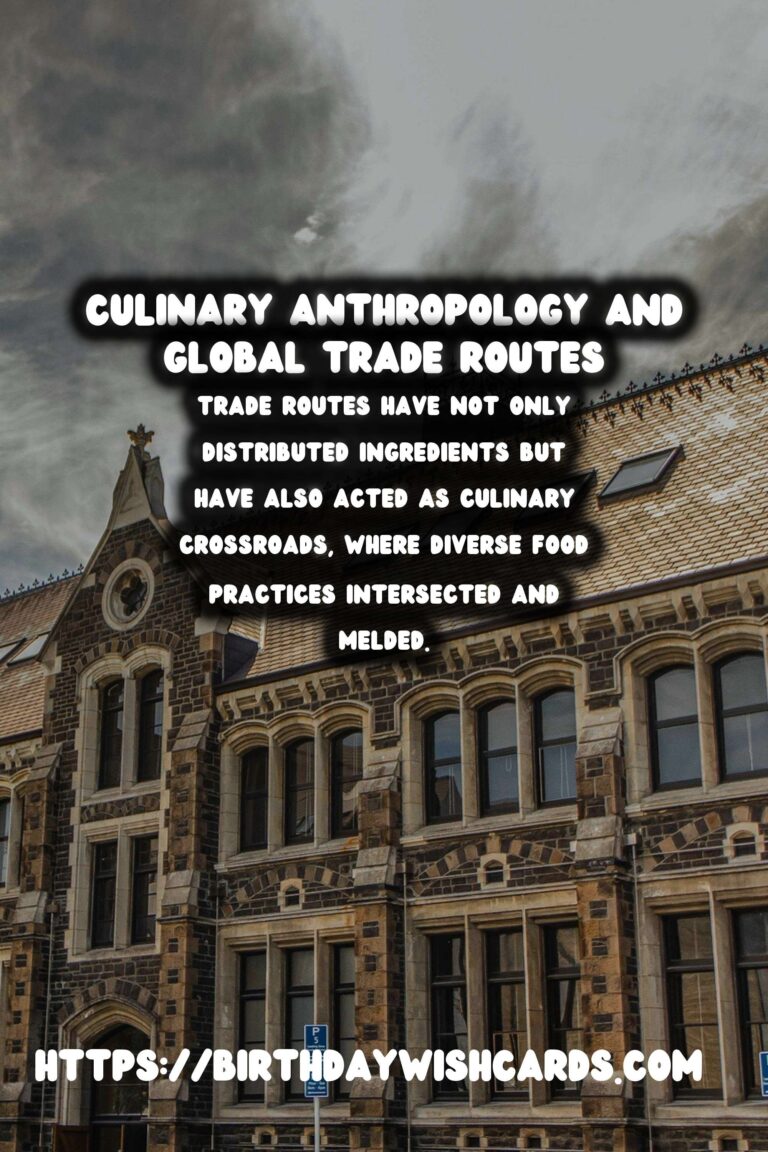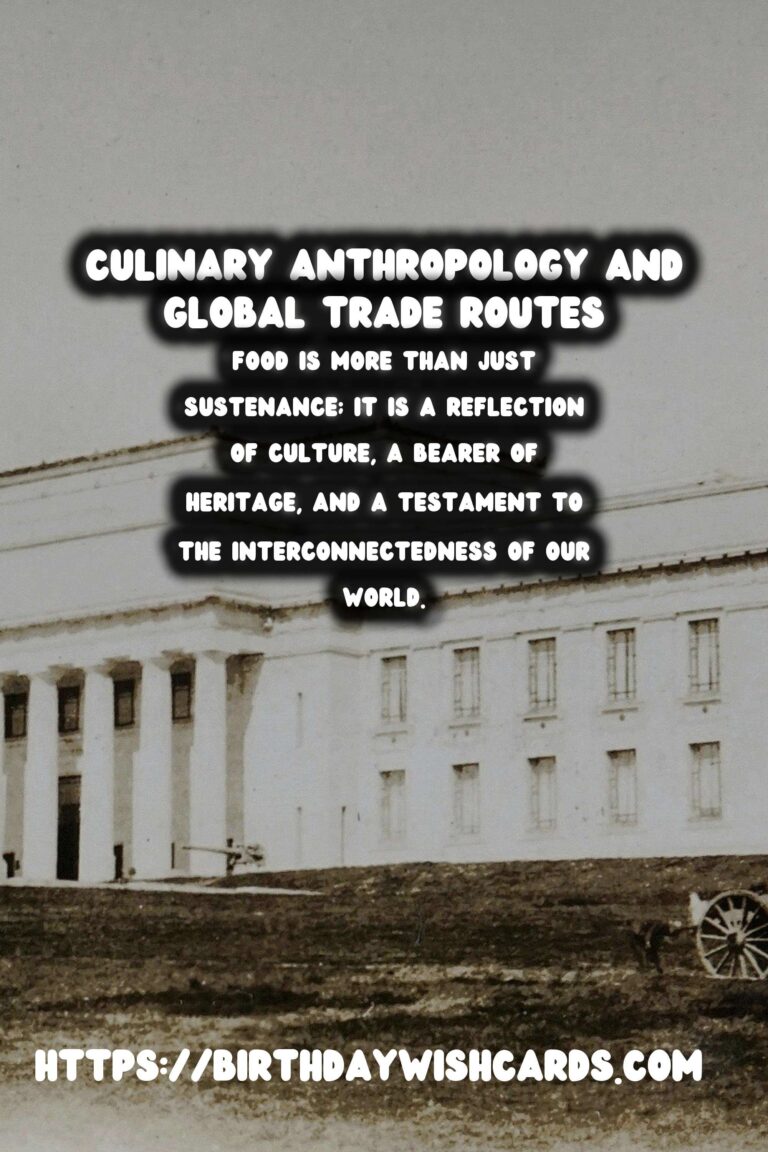
Food is more than just sustenance; it is a reflection of culture, a bearer of heritage, and a testament to the interconnectedness of our world. Culinary anthropology delves into this fascinating interplay, exploring how global trade routes have historically influenced and shaped food cultures across the globe.
The Birth of Trade and Its Impact on Food
Trade has been the heartbeat of human civilization. From the ancient Silk Road to the Spice Route, these paths were more than mere trade corridors. They were the veins through which cultural exchange and culinary influences flowed freely. As traders moved goods, they also transported spices, flavors, and cooking techniques, leading to the emergence of new culinary traditions.
The Silk Road, stretching from China to the Mediterranean, is one of the most prominent examples of early trade routes. Along these paths, not only silk but also a variety of spices, tea, nuts, and fruits were exchanged. This facilitated a fusion of cuisines, marrying the flavors of the East with those of the West.
The Spice Route and Its Aromatic Legacy
The allure of spices has driven explorers across oceans and continents. The Spice Route, a maritime path, was pivotal in the distribution of exotic spices such as black pepper, cinnamon, and cloves. These spices were highly coveted, not just for their flavor but also for their medicinal properties. They transformed bland European diets and inspired the concept of fine dining.
Spices from the Malabar Coast of India, from the jungles of Indonesia, and the plantations of Sri Lanka left an indelible mark on world cuisines. Portuguese, Arab, and Dutch traders played a crucial role in spreading these spices far and wide, leaving a fragrant legacy that persists today.
Trade Routes as Culinary Crossroads
Trade routes have not only distributed ingredients but have also acted as culinary cross__ __roads, where diverse food practices intersected and melded. African, Asian, and European cuisines often borrowed and adapted elements from each other, leading to the invention of entirely new dishes.
In the Americas, for instance, the introduction of Old World ingredients like wheat and cattle by European settlers profoundly impacted indigenous diets, leading to innovations such as tacos and stews that blend native and foreign elements.
Modern Trade and the Global Kitchen
In today’s globalized world, the impact of ancient trade routes is more visible than ever. Modern logistics enable the swift exchange of produce and perishables worldwide, creating a truly global market that has expanded culinary horizons beyond imagination.
Popular dishes such as sushi, pizza, and curry have transcended their origins, becoming staples in various cultures. This would not have been possible without the foundation of ancient trade routes, which served as early networks for the spread of culinary knowledge and ingredients.
Conclusion: The Ongoing Culinary Journey
Culinary anthropology teaches us that food is not just a means of survival but a symbol of shared histories and mutual influences. The history of global trade routes is an ongoing journey, a testament to the human desire to explore, exchange, and enjoy. By tracing the paths our foods have taken, from ancient marketplaces to our modern tables, we gain a deeper appreciation for the rich tapestry of flavors that define our world’s cuisine.
The legacy of trade routes underscores a universal truth: food has always been, and will continue to be, a powerful connector across cultures. As we savor each meal, we partake in a historical conversation, a culinary exchange that started thousands of years ago and continues to inspire and delight.
Food is more than just sustenance; it is a reflection of culture, a bearer of heritage, and a testament to the interconnectedness of our world. Trade routes have not only distributed ingredients but have also acted as culinary crossroads, where diverse food practices intersected and melded.
#CulinaryAnthropology #GlobalTradeRoutes

